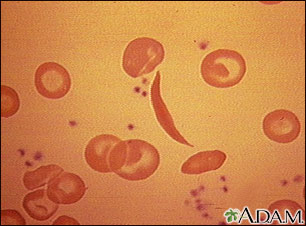Will This Metallomolecule Help to Extend Life?
Perhaps it will extend life. It can kill cancer, kill deadly resistant microbes, and may become a key part of the SENS anti-aging platform. Here is how: The interesting structure known as [Fe(2)L(3)](4+) was first researched as a treatment for cancer. But University of Warwick researchers have discovered that the metallomolecule is a particularly potent killer of bacteria -- even bacteria that are resistant to conventional antibiotics.
The interesting structure known as [Fe(2)L(3)](4+) was first researched as a treatment for cancer. But University of Warwick researchers have discovered that the metallomolecule is a particularly potent killer of bacteria -- even bacteria that are resistant to conventional antibiotics.
One of the main pillars of the SENS anti-aging approach is the elimination of superfluous and dangerous cells that have outlived their usefulness. The more precisely that one can target cytotoxic molecules, the more useful they will be for anti-aging therapies in addition to more conventional medical disciplines such as oncology and infectious disease.
Cross-posted at Al Fin
The compound [Fe2L3]4+ is an iron triple helicate with three organic strands wrapped around two iron centres to give a helix which looks cylindrical in shape and neatly fits within the major groove of a DNA helix. It is about the same size as the parts of a protein that recognise and bind with particular sequences of DNA. The high positive charge of the compound enhances its ability to bind to DNA which is negatively charged.
When the iron-helicate binds to the major groove of DNA it coils the DNA so that it is no longer available to bind to anything else and is not able to drive biological or chemical processes. _PO
 The interesting structure known as [Fe(2)L(3)](4+) was first researched as a treatment for cancer. But University of Warwick researchers have discovered that the metallomolecule is a particularly potent killer of bacteria -- even bacteria that are resistant to conventional antibiotics.
The interesting structure known as [Fe(2)L(3)](4+) was first researched as a treatment for cancer. But University of Warwick researchers have discovered that the metallomolecule is a particularly potent killer of bacteria -- even bacteria that are resistant to conventional antibiotics.Initially the researchers focused on the application of this useful property for targeting the DNA of cancer cells as it could bind to, coil up and shut down the cancer cell's DNA either killing the cell or stopping it replicate. However the team quickly realised that it might also be a very clever way of targeting drug-resistant bacteria.It will be important for the researchers to learn ways that the compound can be preferentially transported across bacterial membranes, to bacterial DNA. By reducing the necessary concentrations needed to kill the bacteria, and by making the construct preferentially attracted to pathological bacteria rather than to normal human cells, the safety and the efficacy of any possible future treatment using this compound will be enhanced.
New research at the University of Warwick, led by Dr Adair Richards and Dr Albert Bolhuis, has now found that the [Fe2L3]4+ does indeed have a powerful effect on bacteria. When introduced to two test bacteria Bacillus subtilis and E. coli they found that it quickly bound to the bacteria's DNA and killed virtually every cell within two minutes of being introduced - though the concentration required for this is high. _PO
The prevalence of antibiotic resistance has resulted in the need for new approaches to be developed to combat previously easily treatable infections. Here we investigated the potential of the synthetic metallomolecules [Fe(2)L(3)](4+) and [Cu(2)(L')(2)](2+) as antibacterial agents.... [Fe(2)L(3)](4+) binds in the major groove and causes DNA coiling... The work described here shows that ... [Fe(2)L(3)](4+) is bactericidal for Bacillus subtilis and Escherichia coli. We demonstrate that [Fe(2)L(3)](4+) binds bacterial DNA in vivo and, strikingly, that it kills B. subtilis cells very rapidly. _IntJnlAntimicrobialAgentsCytocidal approaches are valuable medically to the extent they can be targeted and controlled -- with only limited damage to normal cells and tissues.
One of the main pillars of the SENS anti-aging approach is the elimination of superfluous and dangerous cells that have outlived their usefulness. The more precisely that one can target cytotoxic molecules, the more useful they will be for anti-aging therapies in addition to more conventional medical disciplines such as oncology and infectious disease.
Cross-posted at Al Fin

